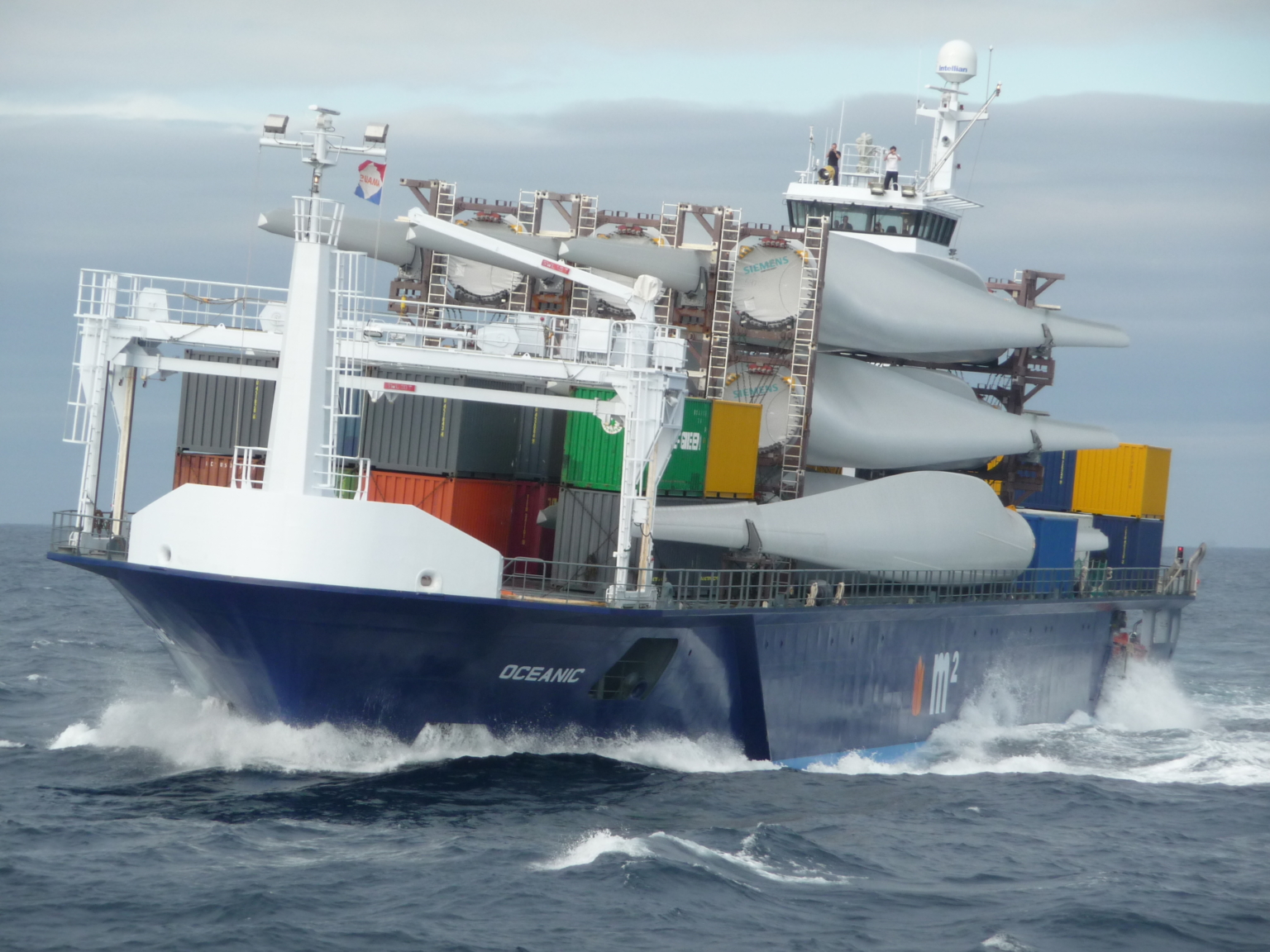In the spotlight 1/4: Conoship’s consultancy for Governments and Professional Membership organizations
Conoship’s comprehensive experience, extensive design library, and highly qualified staff enable the company to develop tailor-made consultancy work that meets the specific needs of each client. In this first article of a series of four, Conoship shares the consultancy studies where the analytical and independent view of Conoship International helped to improve upcoming rules and regulations.
Conoship regularly advises various institutions and policymakers, like governments, port authorities, and member organization on the consequences of upcoming rules and regulations. Conoship assumes a neutral position in this and makes evaluations based on technical data analyses allowing policymakers to create better regulations. Currently a research project by Conoship is being discussed in the Dutch parliament. Additionally, results of Conoship’s studies regarding EEDI, EEXI, CII minimum power requirements, air pipe closing devices, open-top sailing, and second generation stability criteria have been incorporated into regulations.
How do we do this?
At Conoship we are involved in numerous research projects to ensure that we remain at the forefront of developments in naval architecture and maritime technology. Conoship’s comprehensive experience, extensive design library, and highly qualified staff enables Conoship to develop tailor-made consultancy work that meets the specific needs of each individual client.
We do this:
- Independently
- Pragmatic
- Knowledgeable
| Curious or need some maritime expertise? Contact us to discuss what we can achieve together!
In this article we share several of Conoship’s consultancy studies where the analytical and independent view of Conoship International helped to improve upcoming rules and regulations.
EEDI regulations for smaller cargo vessels
To reduce CO₂ emissions from ships, the EEDI or Energy Efficiency Design Index was made mandatory in 2013. Before these regulations came into force, Conoship actively contributed to the development of these regulations.
Together with Netherlands Maritime Technology (NMT), The Royal Association of Netherlands Shipowners (KNVR), and Maritime Research Institute Netherlands (MARIN) Conoship conducted a study to determine how smaller general cargo vessels, and smaller (geared) multipurpose vessels would fit in the guidelines for EEDI calculations as initially proposed by the IMO. Based on this study, changes were proposed to make the regulations better applicable for smaller cargo vessels as well. The changes we proposed were subsequently applied in de guidelines for the EEDI regulations by the IMO.
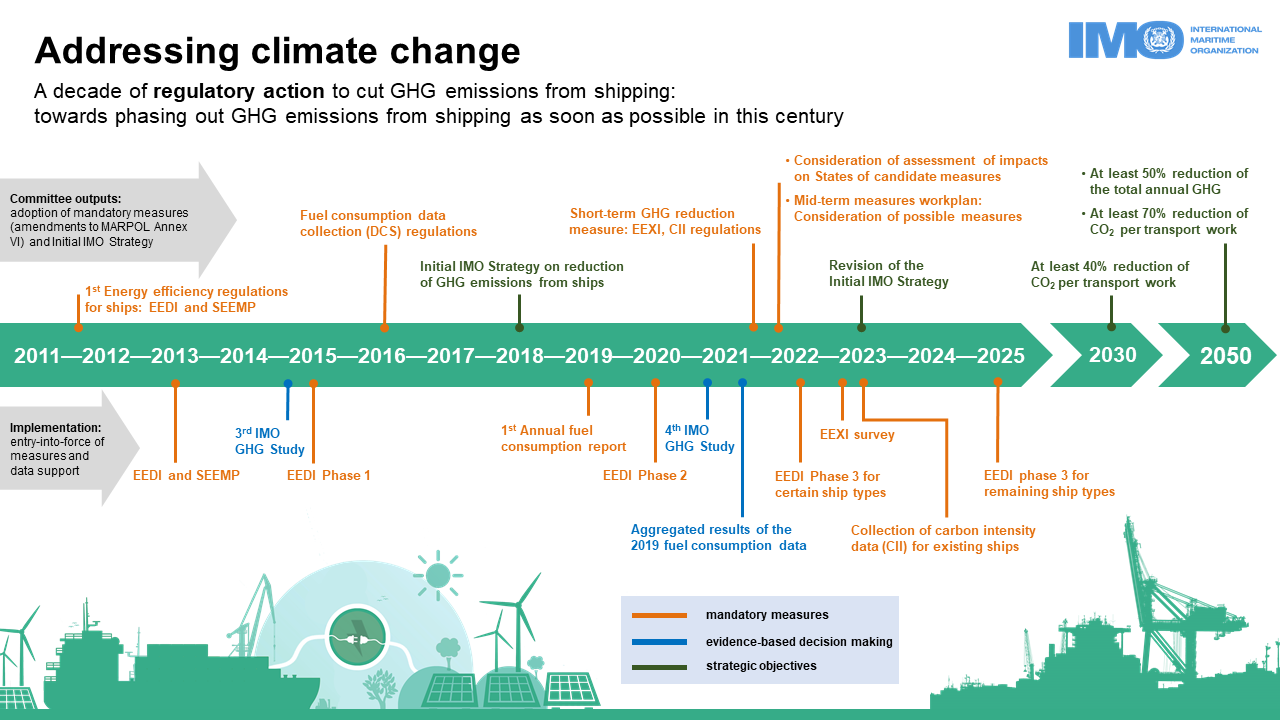
Regulatory actions timeline IMO
Minimum power requirements
The implementation of the guidelines of the EEDI regulations has resulted in ship designs with less installed power, which led to a proposal of the IMO to implement a minimum power limit for cargo vessels to be able to safely maneuver in difficult weather conditions. Together with MARIN, Conoship conducted a study to investigate whether this would also needed to be applicable for (smaller) General Cargo Vessels. The study showed that even with the lower installed power, of the post EEDI designs, the General Cargo Vessels could still maneuver in difficult weather conditions.
As a result of this study, there are no minimum power requirements for general cargo vessels in the regulations. The minimum power requirements apply only for bulk carriers and oil tankers.
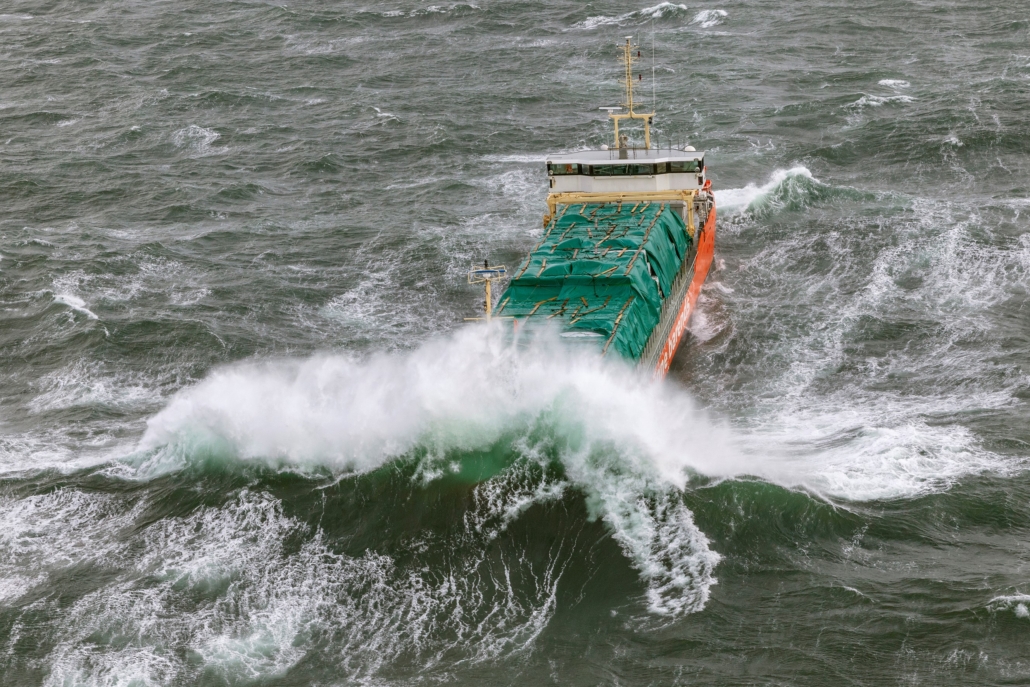
The Lady Adele from Wijnne Barends in difficult weather conditions
EEXI and CII regulations
The revised MARPOL Annex VI is effective as of January 2023. All current ships that are 400 GT and larger will have to adhere to the IMO’s Energy Efficiency Existing Ship Index (EEXI) standards for CO₂ emissions per cargo ton and mile. The Energy Efficiency Existing Ship Index (EEXI) is required in accordance with the different values set for ship types and size categories. This indicates the energy efficiency of the ship compared to a baseline. Ships are required to meet a specific required EEXI, which is based on a required reduction factor (expressed as a percentage relative to the EEDI baseline).
The IMO CII (Carbon Intensity Indicator) rating measures how efficiently a vessel above 5,000 GT transports goods or passengers and is given in grams of CO₂ emitted per cargo-carrying capacity and nautical mile.
Prior to the implementation of the EEXI and CII regulations, Conoship conducted a cross-sectional study together with the KVNR and MARIN to investigate the effects of these regulations for the Dutch Fleet. Based on our research, implications for smaller general cargo ships, and ships with cranes, reefers and tank heating were indicated, leading to an advice to the Ministry of Transport to propose changes to the IMO.
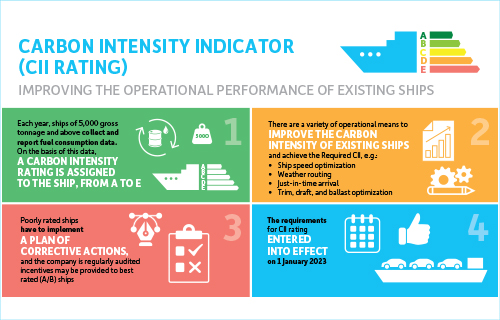
IMO CII rating
In the above studies, Conoship International has contributed to reducing the environmental impact of shipping. In addition to rules regarding the environmental impact, ship designs must comply with safety regulations concerning the construction, structure, subdivision, stability, machinery, and electrical installations on board ships. In the following studies we contributed to ship safety.
Second Generation Intact Stability Criteria
To incorporate generic dynamic stability criteria, the IMO developed the 2nd Generation Intact Stability Criteria. As ships vary widely in type, size, operational profile and associated environmental conditions, some ships are more at risk of encountering critical stability in waves than others. In study for the Dutch Government, Conoship, in close cooperation with SARC (Scheepsbouwkundig Advies en Reken Centrum), checked the applicability of these regulations for smaller cargo vessels, leading to the advice to describe Level 1 requirements more specifically.
Stability risks of beam trawlers
The fishing industry has always been very important to the Netherlands. As early as the Middle Ages, fishing was a driver of the Dutch economy. The introduction of the beam trawler just after World War II, allowed fishermen to catch more fish and go further out to sea. Following the accidents involving the UK-165 ‘Lummetje’ (November 2019) and UK-171 ‘Spes Salutis’ (December 2020), the Ministry of Infrastructure and Water Management requested Conoship to investigate the stability risks of beam trawlers. For this study, Conoship International conducted a thorough analysis of all factors which play a role in the stability of these vessels.
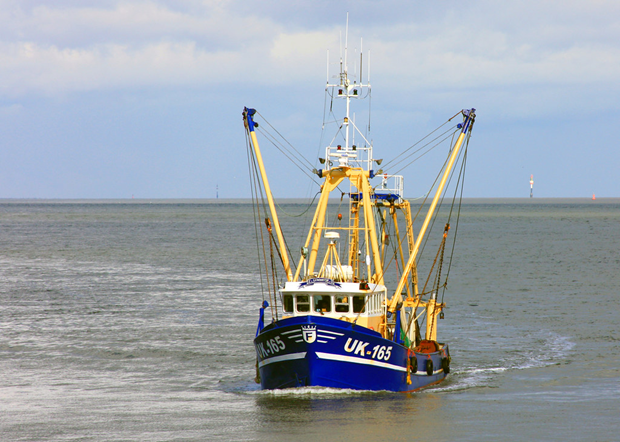
Beam trawler ‘Lummetje’ UK-165
“This completed report gives a good insight into the risks of asymmetrical loads on the stability of beam trawlers and what can be done to increase the safety for the crew of these vessels.” – Jules Blokhuis, Senior Project Manager at Conoship International.
At the moment the report is evaluated by the Dutch parliament. We look forward to the follow-up of our consultants’ advice.
Open-top sailing
Whenever certain requirements and circumstances are met, the Dutch Flag allows operations without hatch covers on the cargo hold, enabling ships to carry oversized voluminous solid project items (e.g. wind turbines, project parts) in the cargo hold(s).
Conoship’s consultants actively contributed to the substantiation of this position, which has resulted in the equivalent arrangement for “Open top general cargo ships XQ42482” for ships flying the Dutch flag.
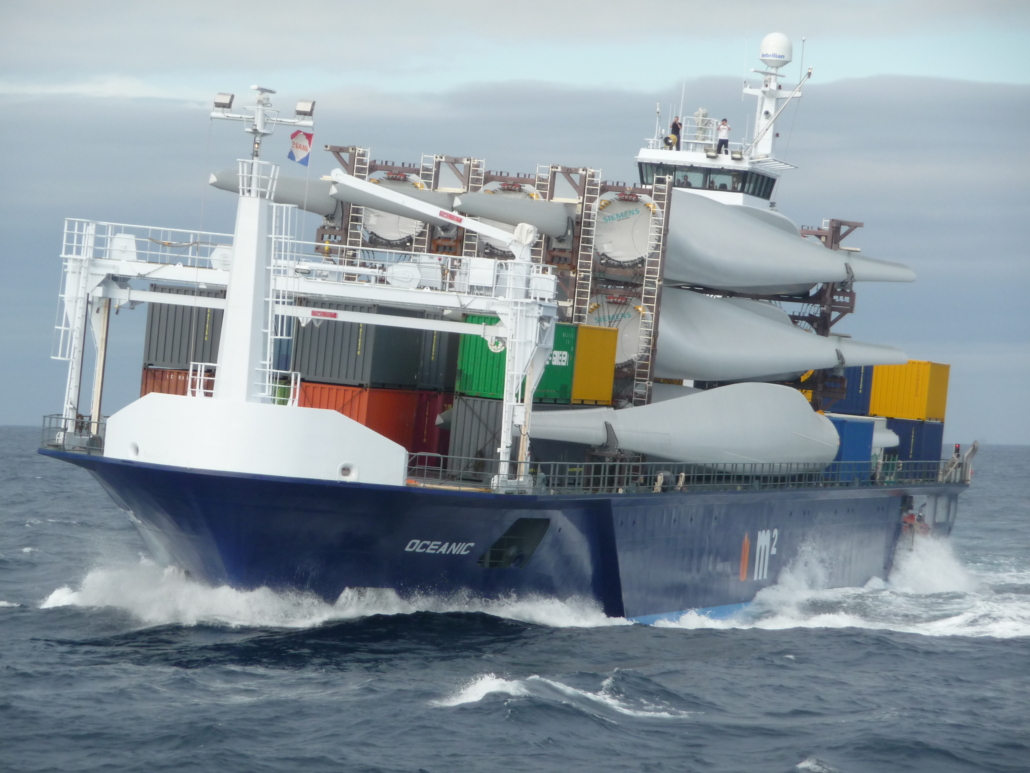
Hartman – Oceanic M2 runner
Air pipe closing device
Under certain conditions, The Netherlands Flag accepts that automatic air pipe closing devices are considered watertight instead of weathertight. This provides advantages for among others probabilistic damage stability calculations, leading to larger maximum drafts and dead weights. Conoship’s consultants actively contributed together with the KVNR and NMT to the substantiation of the position, which has resulted in an equivalent arrangements for Dutch Flag vessels, and a strengthened maintenance regime.
In this article we shared several of Conoship’s consultancy studies where the analytical and independent view of Conoship International helped to improve rules and regulations for ship design and shipping. But that’s not all. Conoship’s experts also have experience in the field of optimising ship production facilities, alternative fuels to reduce ship’s CO₂ emissions, and fleet development.
| Curious or need some maritime expertise? Contact us to discuss what we can realise together!

